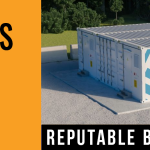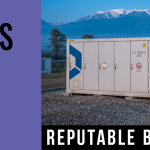 Over the past six years, 110 villages in Africa and Asia received their power from solar panels and batteries that use zinc and oxygen. The batteries are the basis of an innovative energy storage system created by NantEnergy, a company owned by Patrick Soon-Shiong, a biotech entrepreneur and surgeon originally from South Africa.
Over the past six years, 110 villages in Africa and Asia received their power from solar panels and batteries that use zinc and oxygen. The batteries are the basis of an innovative energy storage system created by NantEnergy, a company owned by Patrick Soon-Shiong, a biotech entrepreneur and surgeon originally from South Africa.
Thomas Edison tried to develop batteries made with zinc 100 years ago. But he did not figure out how to make them technologically viable. NantEnergy says its zinc air batteries are the first to become commercially available.
Scientists at NantEnergy said they had achieved two key goals: to make the batteries rechargeable, and to lower their cost for energy storage to $100 per kilowatt-hour. That is a figure that some people in the industry have said is essential to creating a carbon-free electric grid that operates even when the sun is down and the wind abates.
Zinc air batteries are one of several potential alternatives to lithium-ion batteries, which have been the focus until now for large-scale power storage and electric vehicles.
What are the commercial sources of zinc?
Dr. Soon-Shiong, whose company gets its zinc from Indonesia, has cited the mineral’s abundance. The United States accounts for about 5 percent of the world’s zinc reserves and 7 percent of production, mostly from mines in Alaska, according to Sri R. Narayan, professor of chemistry at the University of Southern California. Australia and China have about half the world’s reserves and are among the largest producers.
Dr. Narayan said reserves of lithium, a primary element in lithium-ion batteries, were one-twentieth those of zinc, but he added a note of caution. “At the present rate of production of zinc, zinc reserves will last about 25 years,” he said. “So it is not clear from the reserves available if we will have enough zinc to support the enormous need that will result from the demand for grid-scale batteries.”
Materials like lithium are costly in part because they are rare. The mining of lithium has also threatened the health and safety of workers in areas where it has been plentiful, like the Democratic Republic of Congo. Prolonged exposure to lithium has been associated with health effects like fluid buildup in the lungs. And lithium-ion batteries can pose a fire hazard.
Zinc air batteries lack toxic compounds, are not flammable and can be disposed of safely, according to MIT Technology Review. Still, the mining and processing of zinc does present hazards. It comes from an ore consisting of zinc sulfide and is usually produced in conjunction with lead, cadmium and nickel, Dr. Narayan said, and large-scale production can raise environmental issues from sulfur dioxide and cadmium-vapor release.





